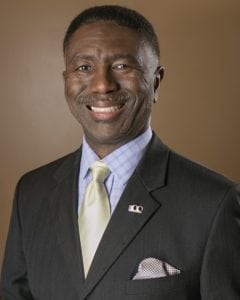
 Since 1999, thanks to the efforts of the American Foundation for Urological Disease (AFUD), the month of September has been devoted to Prostate Cancer Awareness.
Since 1999, thanks to the efforts of the American Foundation for Urological Disease (AFUD), the month of September has been devoted to Prostate Cancer Awareness.“We have found that education programs tied to sports, outdoor activities and places where men find comfort – such as barber shops and sports bars – are typically more likely to be successful,” confirms Charles Griggs (shown above), COMPPARE Minority Engagement Group Coordinator. “For Black men, the awareness needs to be even more concentrated and focused on safe places. In particular, these include barber shops, churches and family gatherings.”
Charles continues, “While Prostate Cancer Awareness is a great way to educate men on prevention, diagnosis and treatment, more resources should be dedicated for messaging to be Charles continues, “While Prostate Cancer Awareness is a great way to educate men on prevention, diagnosis and treatment, more resources should be dedicated for messaging to be effective.”
For more on the original article visit link below:

Be the first to comment